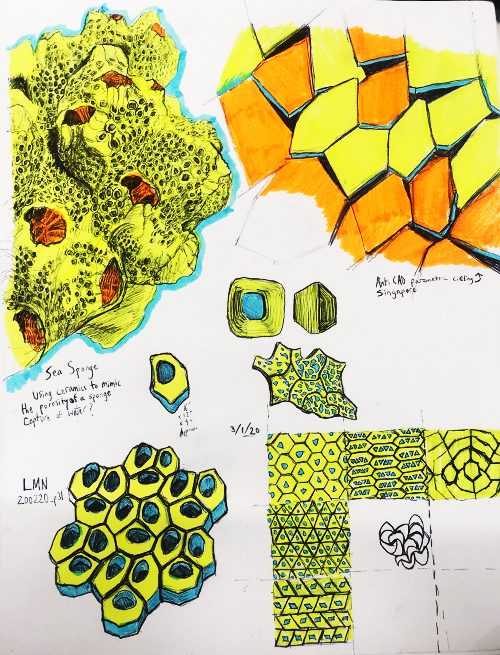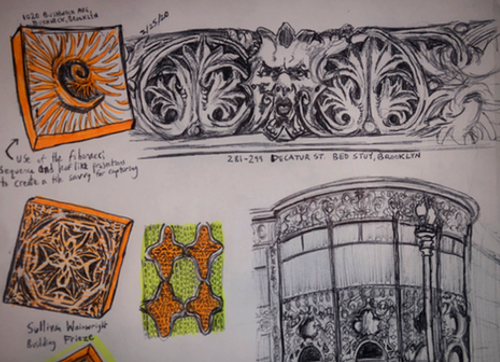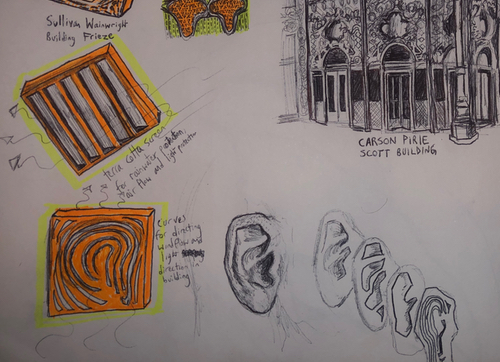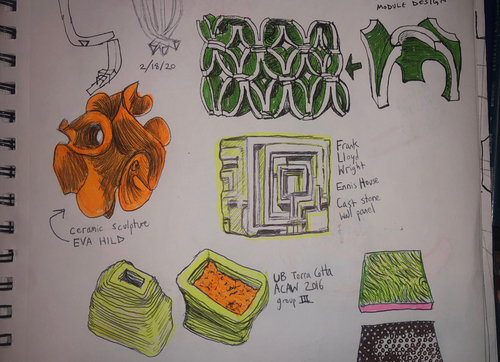
This week I continued my sketching studies into observing what the LMN studio is working on with their ceramic assemblies. So my focus was brought towards the idea of material being used for the purpose of capturing. So the sea sponge was a natural material to study. I also was beginning to formulate how I can develop a single modular unit which can be repeated to produce a system. I started with simple hexagons, rhombus’s and triangles. But I’d like to develop more challenging geometries. For example LMN’s modules vary in shape so maybe I can create a complex system out of a few different connecting shapes.
I also started studying the idea of growing moss on terra cotta and creating textured surfaces with ridges that decrease sun absorption for a rain screen system. I’m currently favoring the idea of creating several connecting irregular shapes pieces which have wavy, textured surfaces. Each has distinct performative action such as light control, heat absorption and visibility and I’d like to maximize those purposes with an artistic flare. So to combine this with my previously posted precedent study will be my goal.






